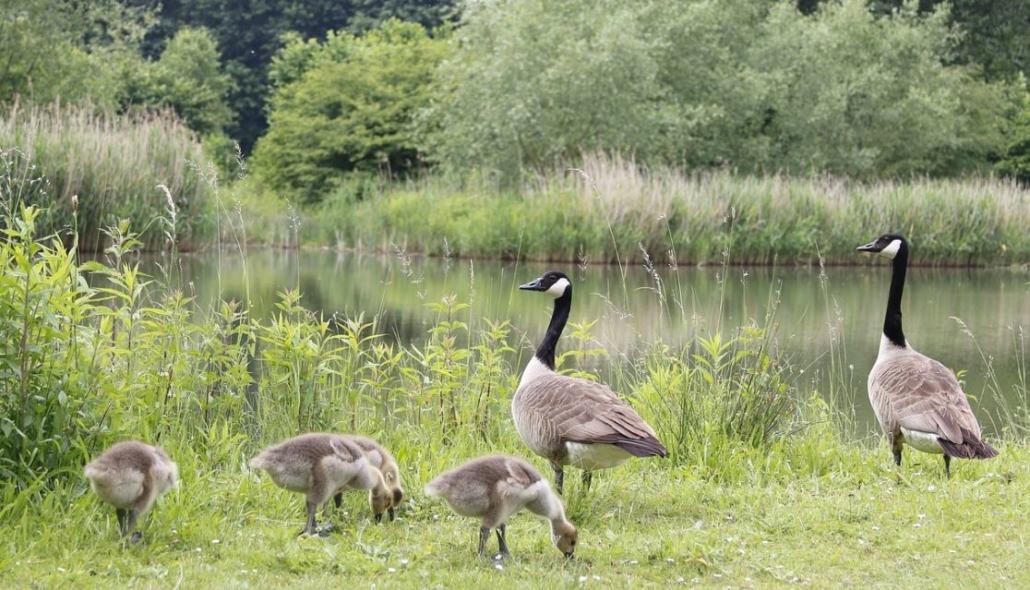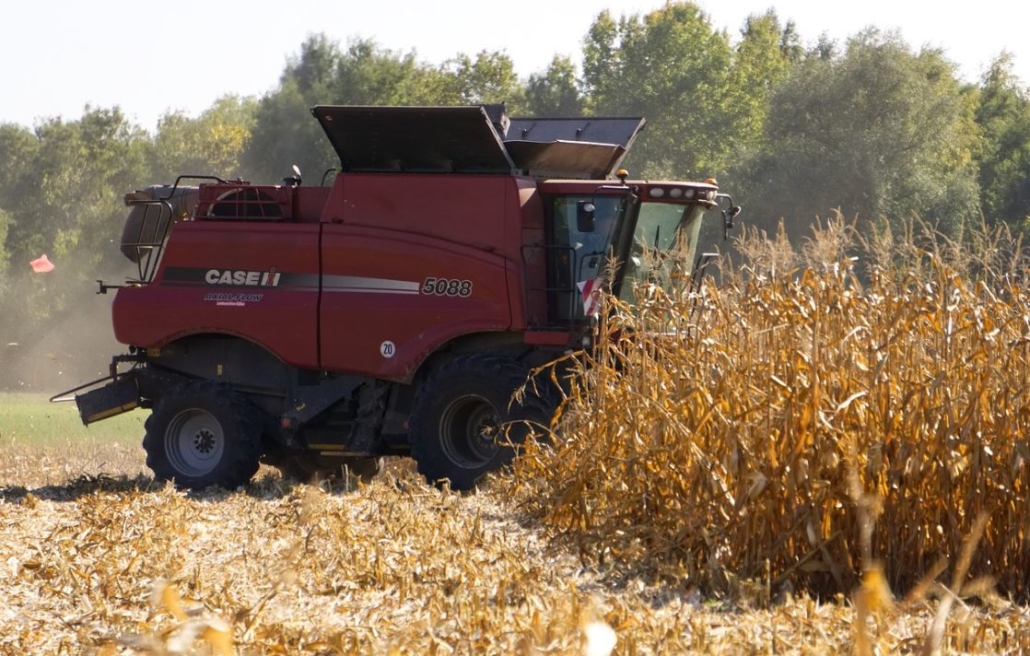How to Offset Canada Goose Crop Damage
There’s something special about owning land and looking out at your farm fields. They are your livelihood and you probably spend a great deal of time and money to prepare, plant, maintain, and harvest them. So when you look out over your fields and see them packed full of noisy geese devouring everything, it’s reasonable that your blood pressure creeps up a bit. Canada goose crop damage can be a slight nuisance or devastating in the worst conditions. While there are some ways to discourage geese from using your land, the most effective way of removing them is by hunting them. Here’s some information about the Canada goose and how you could potentially offset the crop damage they do by leasing your land.
Geese Facts and Information
Often called “flying rats” by many people, Canada geese don’t have a high reputation. As mentioned, a small flock can do some serious damage to crop fields in short order, and they are common residents at golf courses and beaches where they leave their messy scat behind. It’s no wonder they’re not a fan favorite. But the thing we need to remember is that they’re just doing what they’re hard-wired to do.
The Canada goose – not “Canadian geese” – occur across most of North America, from northern Canada to the northern part of Mexico. There are several sub-species of Canada geese, from the giant Canada goose that lives year-round in the Midwest to the smaller ones that migrate up into northern Canada each year.
Prime Canada goose habitat must obviously include water of some sort, including lakes, rivers, ponds, or marshes. If there is also a farm field or pasture adjacent to it, it will be an attractive spot for geese. But there is a slight difference between Canada goose nesting habitat during the summer and fall migration habitat. During the breeding season while they are molting and raising goslings, they are more likely to stay close to water where they feed much like dabbling ducks on underwater vegetation, but if your fields are adjacent to a water source, they will absolutely use it too.

During their migration, Canada geese typically feed heavily in the morning and evening and spend their nights roosting on water sources. Unfortunately, this overlaps perfectly with the harvest season, which is why Canada goose crop damage can be so bad in the fall. Look at a Canada goose migration map and you’ll see that geese occur across all four North American flyways (i.e., Pacific, Central, Mississippi, and Atlantic). To provide the fuel for their long flights, geese seek out abundant sources of high calorie food, and there are not many natural food sources that can top corn, soybeans, or grains.
Canada Goose Crop Damage
Speaking of which, let’s look at the kind of damage that geese can have on your crop fields. During their summer molting period, geese need a lot of energy to grow additional feathers. Obviously, they need a lot of fuel when they start migrating as well. Crops are extremely nutritious to help them during both times, so they will be popular feeding areas. Importantly, geese tend to target different crops in the spring/summer versus the fall.
- During the breeding season, geese usually focus on lush green growth, including lawn grasses, ryegrass, wheat, alfalfa, soybean leaves – basically any tender young growth. In addition to eating the plant material, large flocks may trample even more, damaging or stunting its future growth. A study on perennial ryegrass fields seeded in April found that Canada goose grazing reduced overall seed yield by 11 to 27% (Canada Goose Management Website 2010).
- In the fall, geese prefer fields that have been partially harvested because it gives them a space to land and they can detect predators easily without any standing crops. The most common crop targeted is corn, but they will also eat soybeans and many grain fields or cover crops (e.g., buckwheat, oats, winter wheat, etc.). It is estimated that a single goose can eat approximately half a pound of corn a day, and it often makes up a third of its fall diet in agricultural areas (Craven and Heinrich 1996). However, much of the corn consumed is waste grain often left in the field anyway.
How to Reduce Canada Goose Crop Damage
The best way to keep geese out of your fields is to maintain a constant presence. You need to keep watch over your fields and act quickly if you see a flock using it. Once geese become accustomed to feeding there, it might become a habit and attract other migrating flocks. Within a couple of years, it could escalate into a very serious problem. But if you can scare and deter them each time they land in your fields, they will likely seek other feeding areas where they aren’t harassed. Here are some specific ways to reduce the Canada goose crop damage on your property.
Farming Practices
Since geese like to have a space to land and an unobstructed view, you can limit how much you expose your crop to predation by timing the harvest right. Try to not harvest anything, even the outer rows, until you’re confident you’ve hit the right calendar date. Then harvest everything as fast as you can to limit the amount of time it is exposed. But depending on the size of your fields and your capacity, you might not be able to quickly do that. If that’s the case, you may have to resort to deterrence measures.

Deterrence Measures
Do you know the best way to deter geese from your fields? As mentioned, if you keep an eye on your farm and can run out with an ATV quickly, you should be able to deter them fairly easily. But in really bad cases, some farms use gas cannons, pyrotechnics, and other loud noises to frighten geese off their fields (Craven and Heinrich 1996). Some of these practices require you to switch up locations frequently as the geese will get accustomed to it. That may not interest you, so there’s one other very effective tool you can use.
Hunting Canada Geese
Fortunately, this is also the most enjoyable deterrence and removal method. Get your family and friends together and organize a Canada goose hunt on your partially harvested corn fields or grain fields. The Canada goose hunting season is fairly liberal and you may be able to apply for special landowner permits to take additional geese due to depredation on your fields. If you don’t hunt, there’s another great option to actually help you earn a bit more from your fields.
Leasing your land for goose hunting (and other waterfowl hunting leases) accomplishes several things at once. It allows you to continue your fall harvest plans without getting distracted by Canada goose crop damage, while other hunters lease your fields to hunt geese on them. You can then earn a side income from the hunting lease to offset the damage that geese already caused. The hunting pressure removes individual geese and may deter flocks from coming back.
If this sounds like an interesting way to reduce the damage on your crops, here is some more information about how to get started.
Sources:
Canada Goose Management Website. 2010. University of Nebraska-Lincoln, NRES 348 Wildlife Damage Management class, Spring Semester. Scott Hygnstrom, Instructor; Stephen Vantassel, Webmaster. Accessed at: http://icwdm.org/handbook/Birds/CanadadGeese/Default.aspx
Craven, S.R. and J. Heinrich. 1996. Canada Geese Crop Damage. University of Wisconsin Extension. Accessed at: https://learningstore.uwex.edu/Assets/pdfs/G3299.pdf
GET INFO ABOUT LEASING THE HUNTING RIGHTS TO YOUR PROPERTY
[av_sidebar widget_area=’SRM-CAPTCHA-FORM’ av_uid=’av-2q9txt’]

Leave A Comment